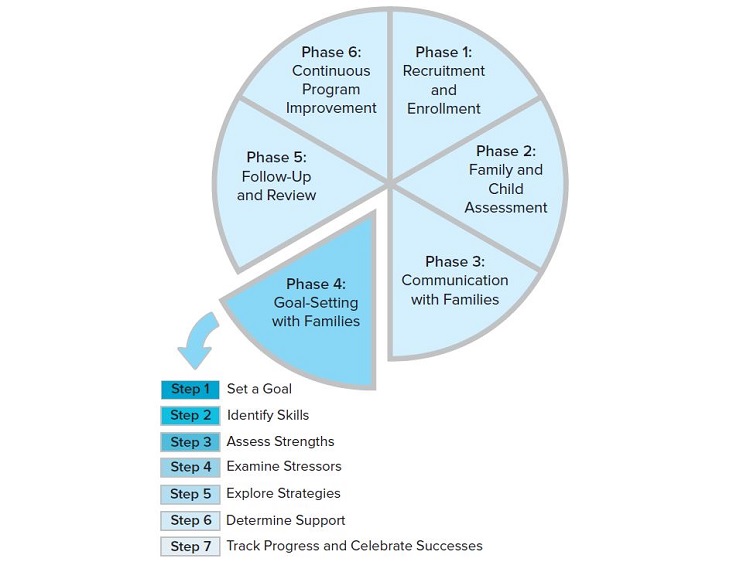"I've learned that people will forget what you said, people will forget what you did, but people will never forget how you made them feel." – Maya Angelou
Supporting families on the road to economic mobility is a highly rewarding process, even though financial conversations with families can be sensitive. Supporting families with their economic mobility goals starts with taking a thoughtful and relationship-based approach.
“When you work hand-in-hand with families to build trusting relationships, you help families support their children to reach their fullest potential.”
Want a refresher on the Family Partnership Process?
The Family Partnership Process: Engaging and Goal-Setting with Families is a great resource to review the engagement and goal-setting process and see examples from real families. You can also watch a recorded 53-minute webinar on the process.
This Family Economic Mobility (FEM) Toolkit can help you think about families’ goals for economic mobility and how you can partner with families as they take steps to make progress toward those goals. Families build their foundations for economic mobility by:
Head Start staff can partner with families on financial, career, and education goals as part of efforts to promote positive and enduring outcomes for children and families (45 CFR §1302.52(a)). Head Start staff can use the Family Partnership Process guide to support families in pursuing family economic mobility.

A successful family partnership process is based on a relationship-based approach that values different perspectives and contributions, explores options, and honors all types of family progress. As staff and families build relationships, they can combine their strengths, skills, and resources to accomplish common goals. This kind of planning and goal-setting with individual families is critical to achieving positive outcomes for children and families.
Your goal in the family partnership process is to build a relationship with each family, follow their lead, and offer support along the journey.
The next subchapters apply family economic mobility to the six phases of the family partnership process. Look for stories from real programs and families along the way!
Gather and use the information that families share.
Learn more about the child and the family.
Develop a deeper understanding of strengths, hopes, and challenges.
Use the seven steps for goal setting.
Revisit goals and measure progress.
Use Family Partnership Plan data for planning and continuous improvement.
"I've learned that people will forget what you said, people will forget what you did, but people will never forget how you made them feel." – Maya Angelou
Last Updated: November 2, 2023